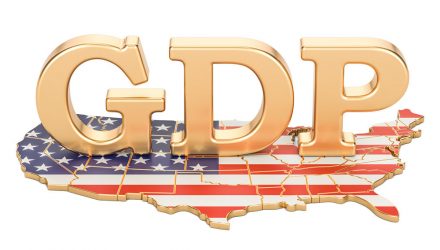Fed Reserve Vice Chair Stan Fischer tendered his resignation, with a target effective date of mid-October. This opened another seat on the FOMC that needs to be filled. The Federal Reserve began to unwind the massive balance sheet that grew significantly following the Great Financial Crisis, topping out in excess of $4.5 Trillion.
They will begin by allowing $10 Billion in monthly coupon/maturity receipts to run off (no longer be reinvested).
The process of shrinking the balance sheet will be gradual and take many years.
Yields moved higher, with the 10 year Treasury increasing to 2.33%, after starting the month in the 2.12% area.
The odds for a December rate hike also adjusted markedly higher in September. Fed Chairwoman Yellen said in a speech that it would be imprudent to keep monetary policy on hold until inflation rises to 2%. After beginning with a 34.5% probability, the likelihood of a December raise closed out September at 70%, roughly doubling.
The move up in yields resulted in weak bond return numbers for the month. The High Yield Corporate and Municipal Indices, along with the EM Sovereign/Credit were able to produce positive returns due to their yield being significant enough to compensate for the impact of the rate increase. The remainder of the high grade indices experienced moderately negative returns for the month, although year to date performance is still good.
Spreads tightened across the board, as risk-on in fixed income remains strong. Investment grade, high yield, and global corporate spreads are all near multi-year lows, as investors stretch for yield. One interesting sign of global bond investors’ strong stomach was Ukraine’s ability to not only access the debt market ~2 years after forcing a 20% “haircut” onto bondholders, but to have the $3 Billion issuance oversubscribed by approximately $7 Billion!
Alternative Investments
Alternatives were a mixed bag in September with notable price action in multiple assets. The Dollar snapped a seven month losing streak in September, with the greenback rising +0.4%. Dollar strength came on the back of renewed expectations for the Federal Reserve to raise interest rates in December (now 70%), as well as weakness in the Euro due to political concerns from recent German elections.
The Euro has fallen from a high of $1.204 to $1.174 after the AfD party won 13% of the German vote to become the first far-right party to win seats in the Bundestag since WWII, achieving the 5% hurdle required to gain seats. This likely serves as a reminder that populist views are still alive in the developed world, especially evidenced by Catalonia’s vote over the weekend to break away from Spain.
Whether or not this movement continues to gain momentum remains to be seen; however, the possibility will likely continue to give investors pause, and keep a lid on the Euro around $1.20.
The Dollar’s strength contributed to weaker Gold prices during the period. Gold prices fell $41/oz, or more than -3.1%, to close at $1,280/oz on the NYMEX. Despite September’s weakness, Gold has served investors well thus far in 2017, up +11.1%. The safe haven alternative continues to be a favorable hedge against potential geopolitical conflict with North Korea, even though a strong Dollar may weigh on prices in the near term.
West Texas Intermediate (WTI) crude oil rose sharply by +9.4%, or $4 per barrel to close September near $52/bbl.
Related: What Has Made Gold ETFs a Great Long-Term Investment
Hurricane Harvey’s aftermath continues to be felt at the pump, with gasoline prices up more than +10% in the past two months, as large swaths of production and refinery capacity in Texas remains subdued. WTI prices have remained largely range bound between $45 and $55 over the past 18 months, with $50 serving as a psychological line in the sand as well as the point where U.S. producers begin to sell oil futures forward. We continue to see prices range bound for the foreseeable future, as drilling activity continues to ramp up within U.S. shale plays.
Hedge Fund performance was largely positive in September, with Macro strategies the lone negative performing strategy, down -0.99% on the month. Interestingly, Macro strategies are also the only negative performer on the year too, down -0.05%, in a year where nearly all major global equity indices have posted double digit returns.
This article was written by Nottingham Advisors, a participant in the ETF Strategist Channel.

